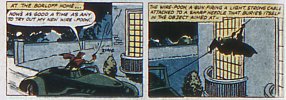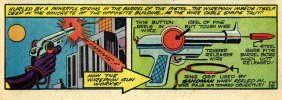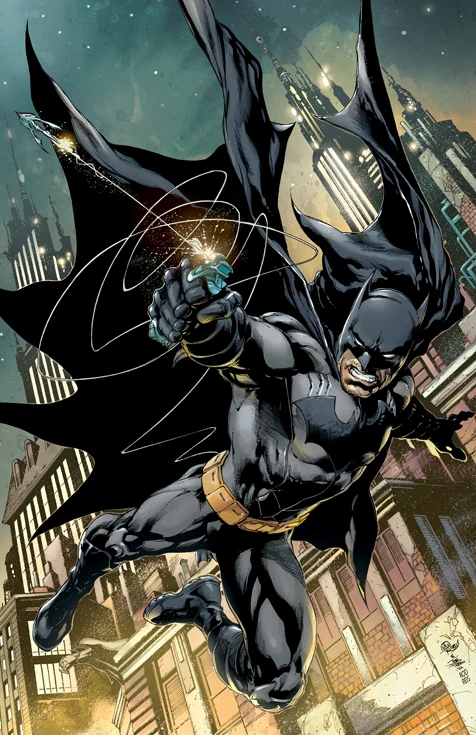From his debut, Batman did not use grapple guns, usually making use of the
silken cord with
Batarangs as grappling hooks. However, early versions of the gun-fired grappling ropes appeared throughout Batman comics prior to high-tech versions' debut.
Gardner Fox created
Sandman's "Wirepoon" pistol but neglected to ever have have Batman uses such a device. The Wirepoon pistol itself lacked any motorized pulley system, it was essentially a miniaturized harpoon launcher. Jim Shooter created a
Batpoon Launcher in 1966 for
World's Finest Comics #163, but the device is only used to attack
Superman and never seen again. That same year
Robert Kanigher created the concept of
Suction-Cap Climbing Ropes in
Batman #183, the only difference being that used suction-cups rather than dangerous harpoon bolts.
In 1981, Gerry Conway wrote
Justice League of America #196, which depicted Batman using a
Batarang Launcher to save himself from falling, rather than just throwing a roped-Batarang as usual. It basically the same as the Wirepoon, though this did not feature a motorized-pully system and used a batarang as its grapple hook. The gadget itself was a cylinder-shaped tool rather than pistol. In 1986
Frank Miller had Wayne use a Harpoon Pistol in
Hunt the Dark Knight. The harpoon pistol is just a modified Mauser firearm, presented as more grounded and practical tool stored in a holster on the side of his boot. However, none of these featured motorized pulley systems and Batman would physically climb the ropes once fired. Additionally, the character would rarely used such devices more than once, with them usual being abandoned after their first appearances.



